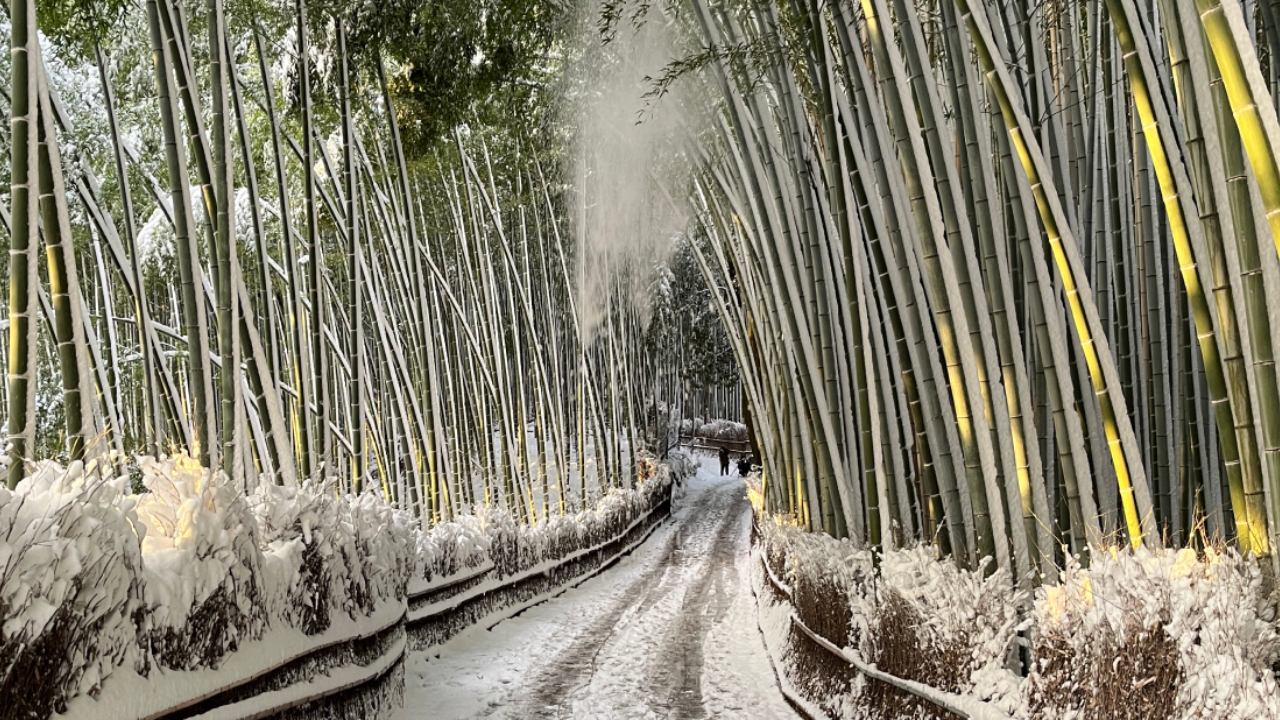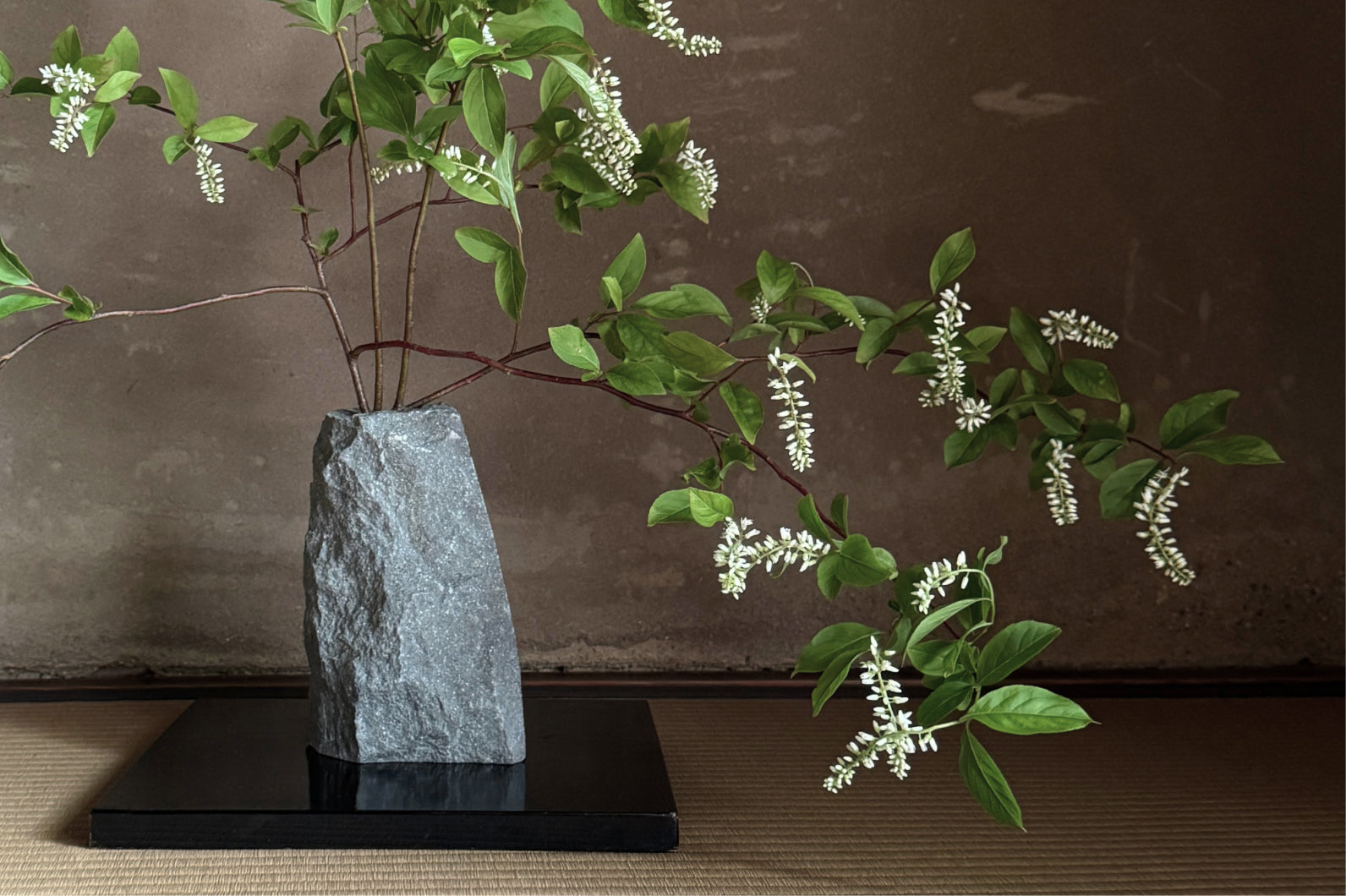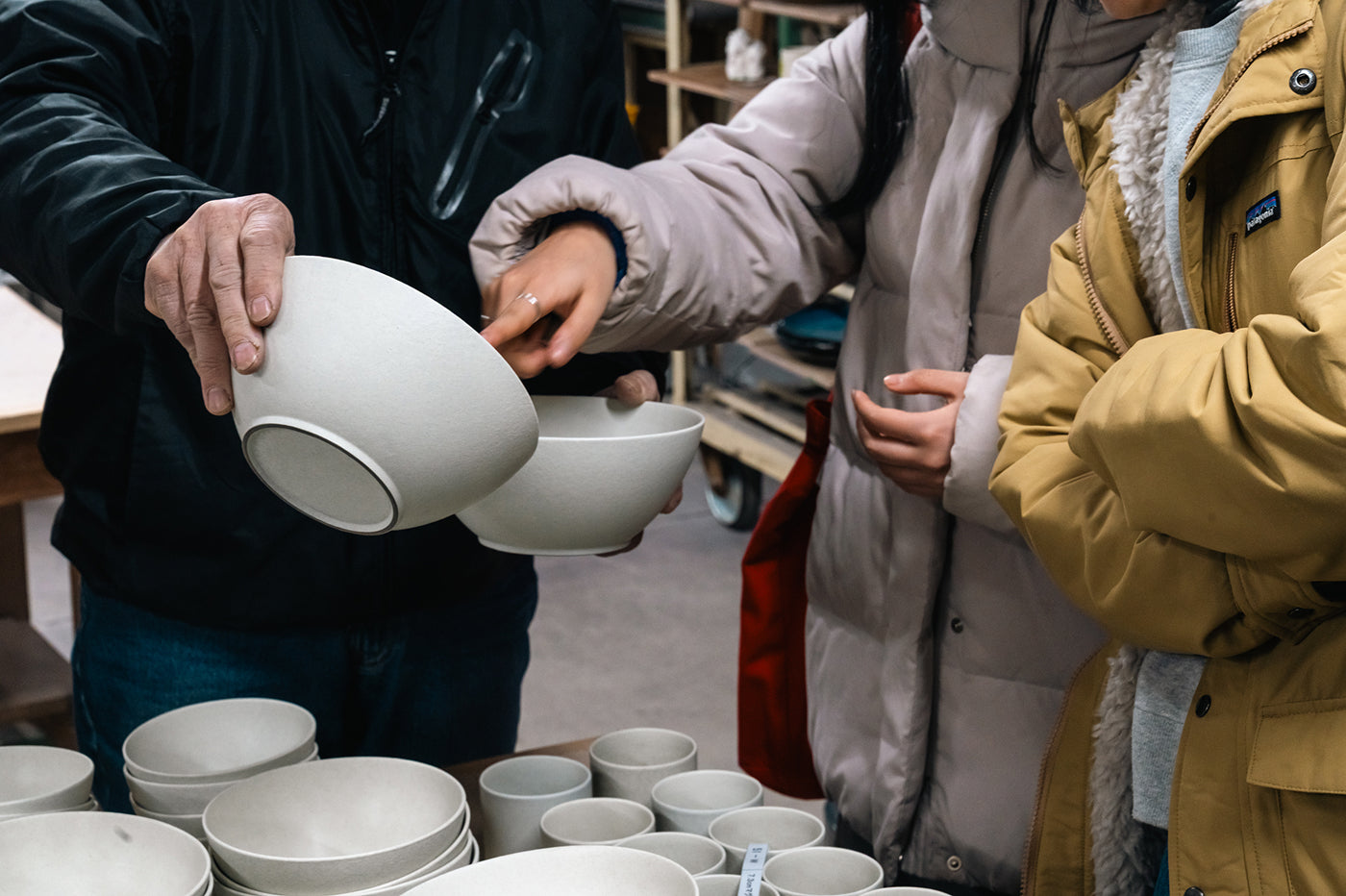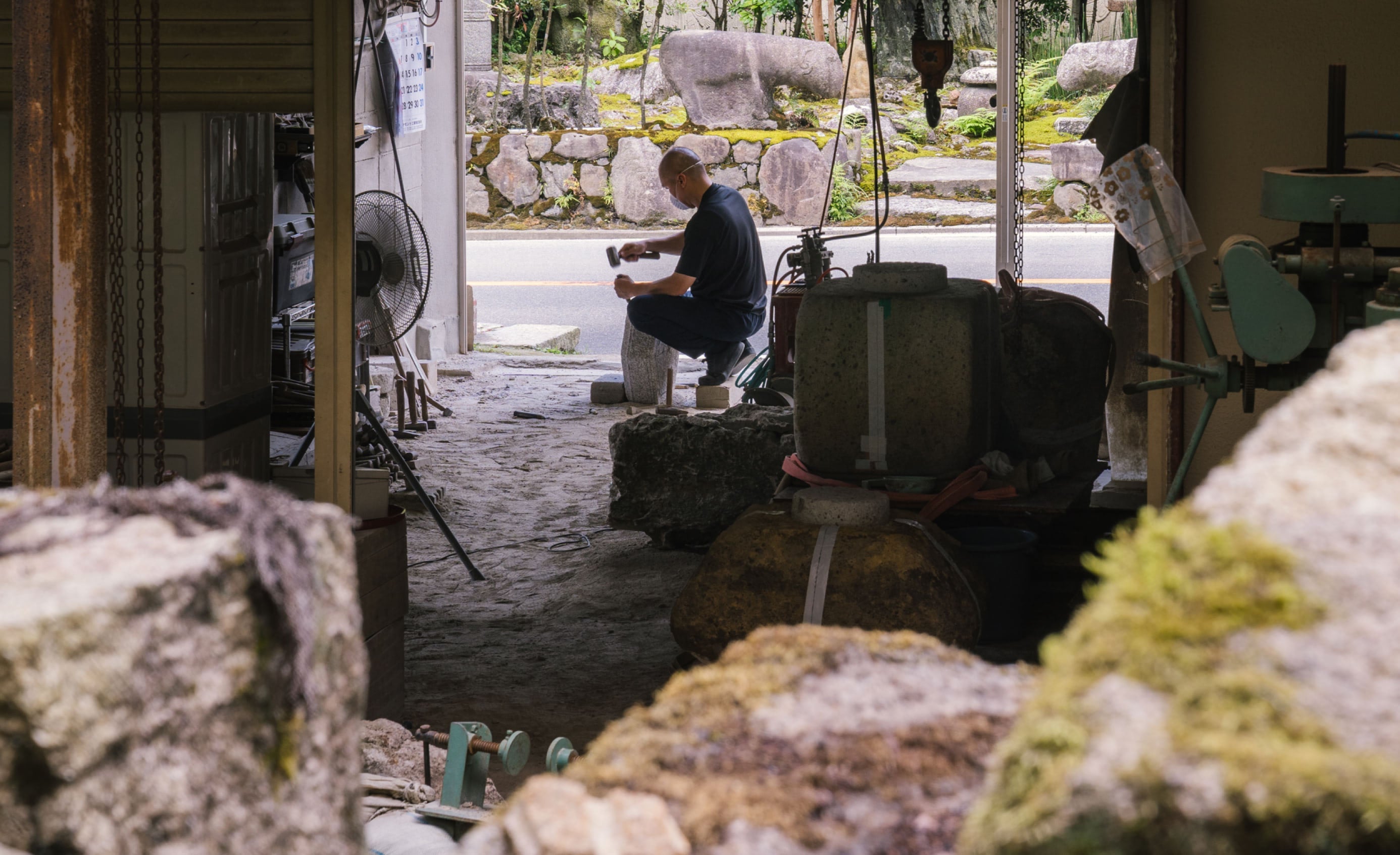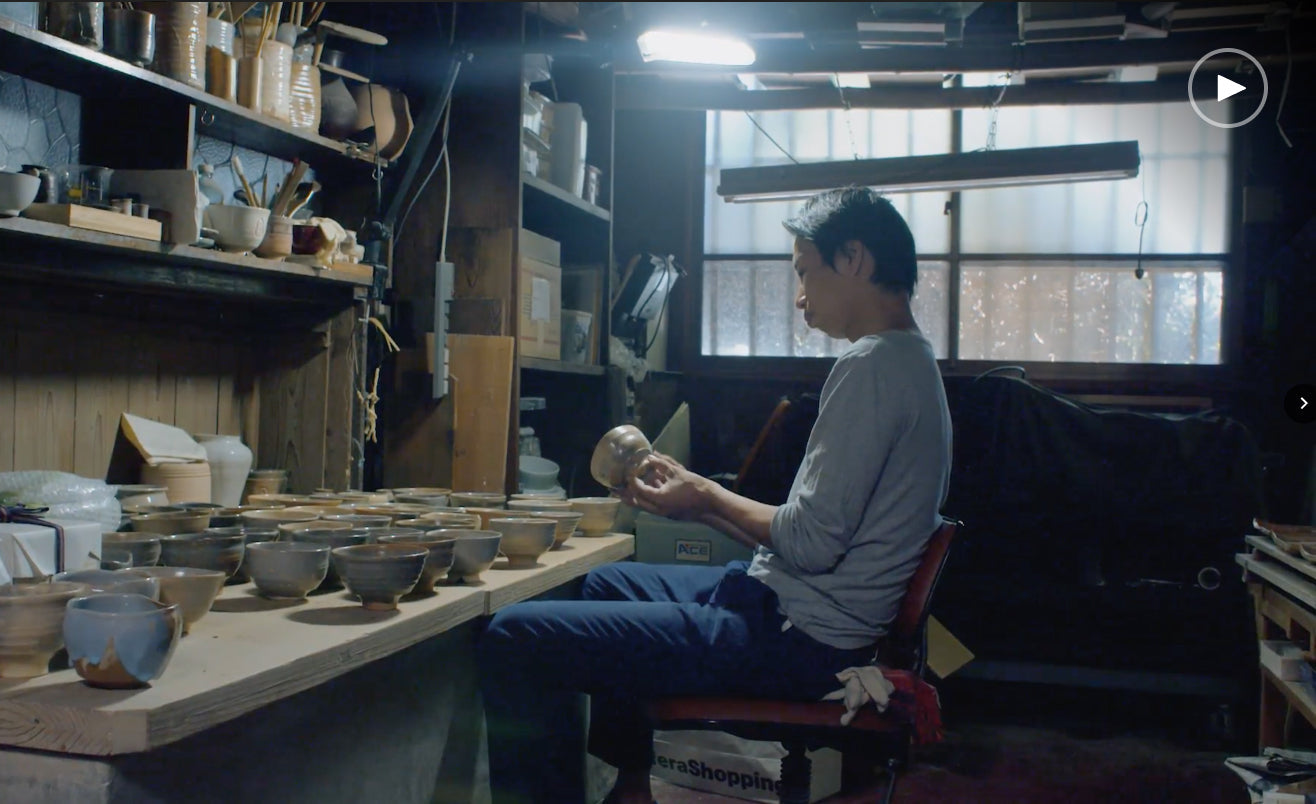Japan's winter traditions weave heritage with seasonal transitions. The celebration of Toji, Winter Solstice, marks the longest night of the year, symbolizing beginnings and the possibilities that await. And during Oshogatsu, the New Year, families come together to celebrate the coming year. All across Japan, temples and shrines prepare for visitors to pay their appreciation for the past year and support the community’s prosperity in the new year.
Winter is also one of the most beautiful times in Japan, with pine trees softening the landscape. Resilient against the cold, their imagery is often incorporated into decorations during this season as a symbol of endurance. Warazaiku made of rice straw and kagamimochi, a bulbous mini tower of mochi, decorate homes to invite the gods in during the most festive time of year.
We invite you to explore our favorite ways to celebrate the winter season in Kyoto.
BEFORE AND AFTER NEW YEAR'S
Arashiyama

A popular location year-round, Arashiyama is especially enchanting during the colder months. The bamboo groves form a serene pathway to stroll and breathe in the crisp air. And just beyond the bamboo forest (pictured at the top of the page), Hozu River offers traditional river boat tours to take in Kyoto’s winter landscape from a different perspective. While you stroll the historic streets, shops and stalls offer Japanese winter favorites, like hot matcha and dango, round rice cakes. Be sure to try one of the ashiyu, traditional foot baths, where you can soak your feet in mineral-rich, natural hot springs and take in the winter scenes.
Among Arashiyama’s cultural treasures, Jizoin Temple is a must-visit for those curious about kintsugi, as it is historically tied to urushi craft technique. Although urushi has been used in Japan for 10,000 years, legends say that urushi techniques of refining and application as we know them were revealed by the Buddha statue here.
Open to the public year-round, the temple allows visitors to observe a unique link of spirituality and craftsmanship.
The Okazaki Flea Market

The Okazaki Flea Market, held in Okazaki Park in the Sakyo Ward, offers a vibrant collection of antiques and local finds. Held on the fifteenth of each month, this market showcases a diverse array of goods, from vintage kimono fabrics to traditional pottery and unique handicrafts. Locals and tourists alike gather to explore the stalls.
Amidst the historic Okazaki Park, framed by the backdrop of the Heian Shrine, this monthly event provides an authentic glimpse into Kyoto's heritage.
NEW YEAR'S EVE
Honke Owariya

Honke Owariya stands as one of Japan's oldest soba noodle establishments, with a 558-year history. Owariya is celebrated for its commitment to creating traditional handcrafted soba noodles. The restaurant’s menu features a variety of soba dishes, from the simple, warming kake soba to exclusive seasonal dishes such as Toshikoshi soba, or ‘’end of the year soba.’’
Notably, during the Japanese New Year's holiday, soba holds a special significance, as it is traditionally eaten to symbolize longevity. Every New Years Eve, we wait in long queues at soba restaurants or place takeaway orders weeks in advance. Owariya is open for lunch from 11 a.m. to 2 p.m. Wednesday through Monday. Please check their website for information about closings.
Adjacent to the soba restaurant is the Honoke Owariya Confectionary Shop. The shop’s garden offers a tranquil place to warm your hands with buckwheat chai and enjoy soba treats, such as soba mochi, and other buckwheat confectionaries.
Gion
In Winter, Gion becomes picturesque with snow, creating scenes reminiscent of a bygone era, which you can take in as you warm your hands with hot tea from the vendors and shops in the district.
Visiting temples and shrines, such as Gion’s Yasaka Shrine, on New Year’s Eve and New Year’s Day offer a special opportunity to experience a variety of cultural traditions.
On Omisoka, New Year’s Eve, temples and shrines across Japan hold ceremonies to welcome the new year. These festivities often include activities such as writing wishes for the new year on ema, wooden plaques. Be sure to stay for the New Year's Eve bell, Joya no Kane, which is striked 108 times at midnight to bring in New Year's Day.
NEW YEAR'S DAY
Over the following days, hatsumode is practiced, visiting neighboring shrines and temples to express gratitude in advance for the year ahead. Hatsumode celebrations are typically held within the first few days of the New Year, usually on January 1st, 2nd, or 3rd. You can also partake in the traditional experience of receiving your mikuji fortune for the new year.
During this time be sure to pay special attention to your hatsuyume, the first dream of the year, for insights into your fortune. Symbols like Mount Fuji, hawks, and eggplants are believed to bring luck.

The seasonal rituals and traditions that define winter in Kyoto make this time of year truly special and we hope you enjoy them here.


